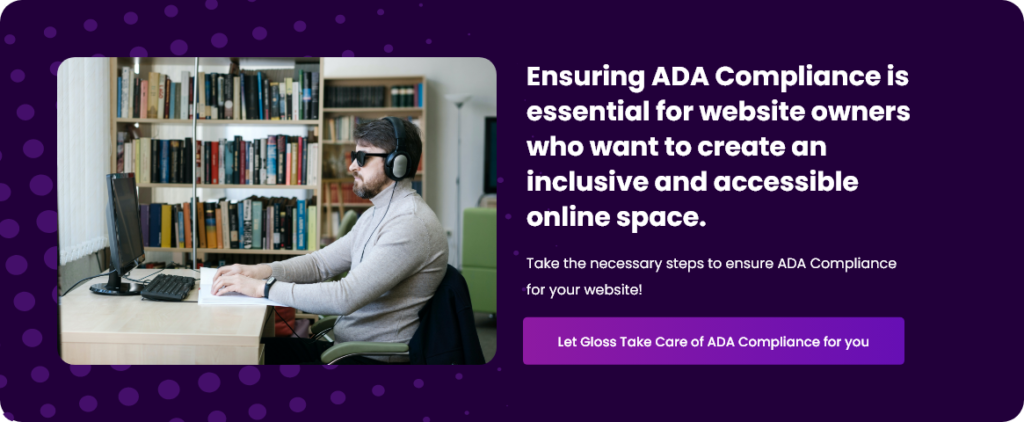Making Your Website Accessible To Everyone: The Importance Of ADA Compliance
Are you aware of how the Americans with Disabilities Act (ADA) applies to websites and digital content? Complying with the ADA is not just a legal requirement, but also an ethical one. In this article, we will highlight the urgency and need for ADA compliance in website design and provide tips for ensuring accessibility for everyone.
The Legal & Financial Risks Of Non-Compliance
Non-compliant website owners run the risk of legal scrutiny and potential financial penalties. The amount a website owner could potentially incur for non-compliance with the Americans with Disabilities Act (ADA) can add up quickly. In recent years, there has been a surge in lawsuits filed against businesses with non-compliant websites, targeting not only large corporations, but also small businesses, non-profits, and bloggers. The best way to avoid the financial and legal risks associated with non-compliance is to ensure your website is ADA compliant.

The Ethical Obligation Of ADA Compliance
Ensuring ADA compliance is not only a legal requirement, but also an ethical obligation. Websites that are inaccessible to people with disabilities exclude a significant portion of the population by hindering their ability to access information and services.
The Business Benefits Of ADA Compliance
Apart from avoiding legal and ethical risks, ADA compliance provides several business benefits. By complying with the ADA, website owners can improve user experience and reach a wider audience. ADA compliance can also help with search engine optimization (SEO) and provides a competitive advantage over non-compliant websites.
How To Make Your Website ADA Compliant
ADA compliance for websites involves making digital content accessible to people with disabilities by ensuring text is readable, images have appropriate alt text, and videos have captions or transcripts. Websites must also be navigable by keyboard and other assistive technologies, all interactive elements accessible via keyboard, and without time limits on completing tasks. Websites must be designed using clear and simple language, presenting content in a logical manner, and ensuring that forms and other interactive elements are easy to use. They must be designed to work with a wide range of assistive technologies with clean and semantic website codes, using proper HTML markup, and avoiding the use of inaccessible technologies such as Flash.
Steps To Guarantee ADA Compliance For Your Website
Ensuring ADA compliance can seem like a daunting task, but it doesn’t have to be. Website owners and developers can take several steps for their websites to be accessible to people with disabilities.
Conducting an accessibility audit of your website is the first step to ensuring ADA compliance. Identifying the accessibility barriers on your website will help you implement best practices to address them, such as adding alt text to images, ensuring that all interactive elements are keyboard accessible, and providing captions or transcripts for videos.
How Gloss Can Help You Achieve ADA Compliance
Gloss is an organization committed to easily help website owners become ADA compliant. Gloss specializes in website design and development and has extensive experience in ADA compliance for all of its clients. Gloss can conduct accessibility audits and implement best practices to make accessibility a priority from the start. Contact Gloss today to make your website accessible to everyone for only $49/month.

 Schedule a Free Consultation
Schedule a Free Consultation




